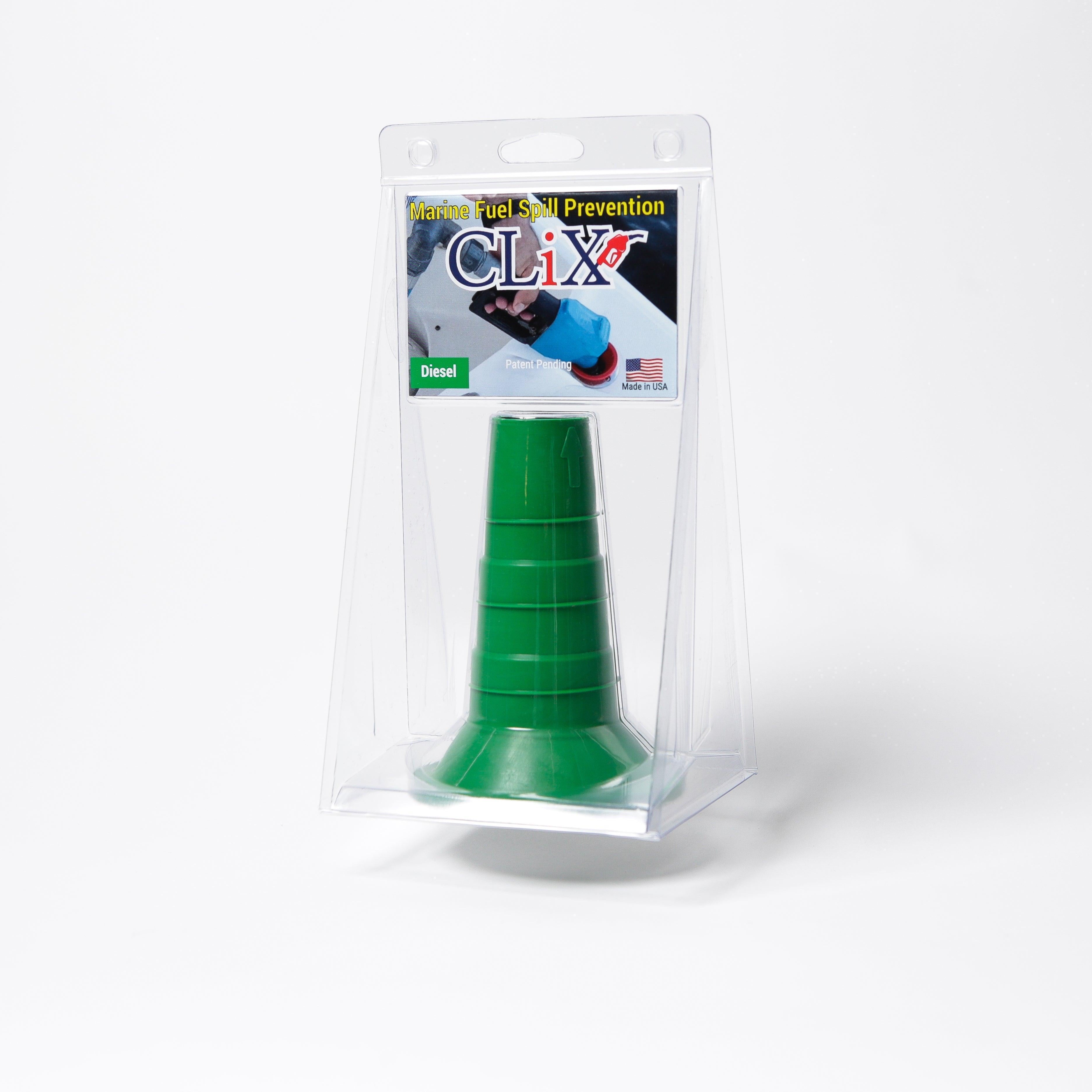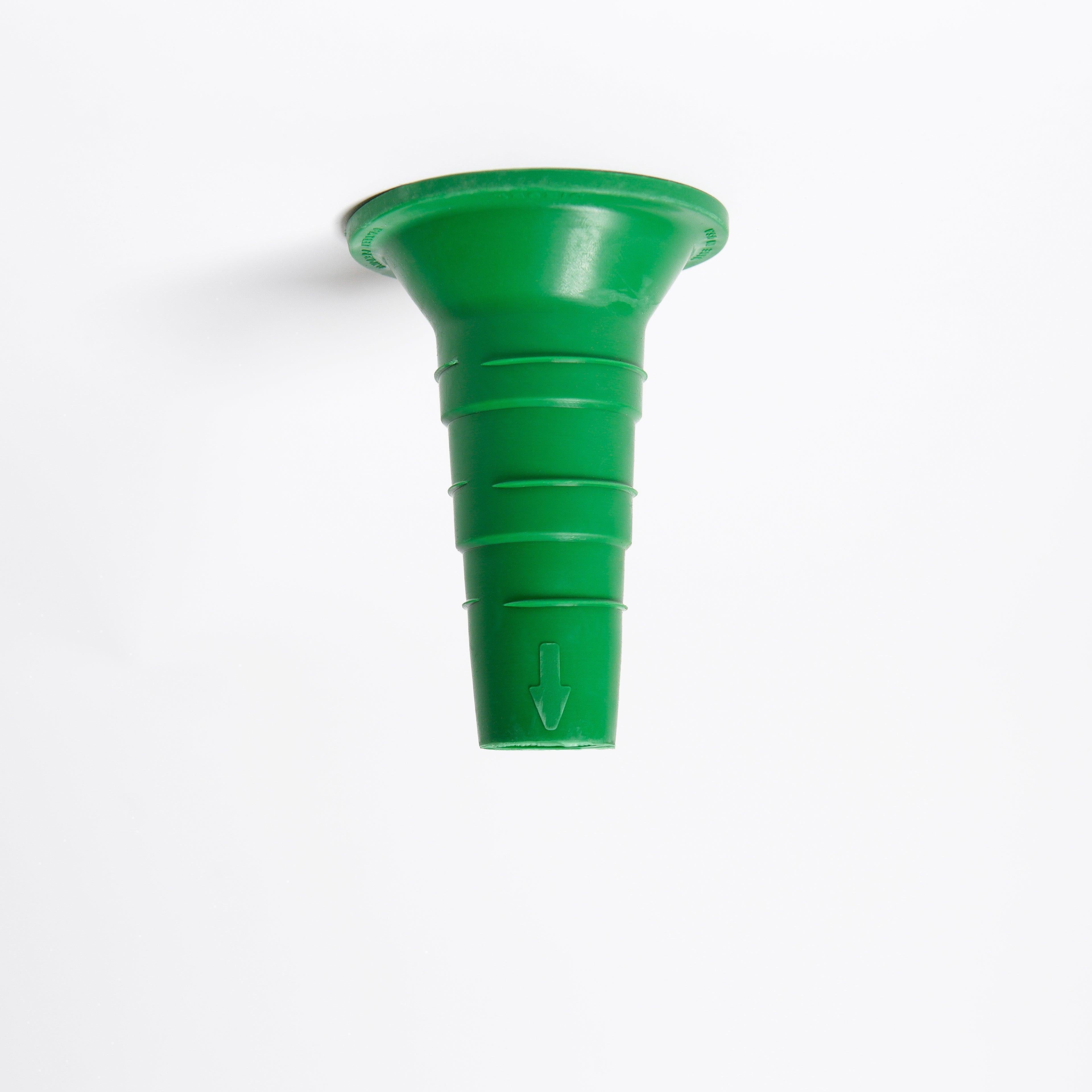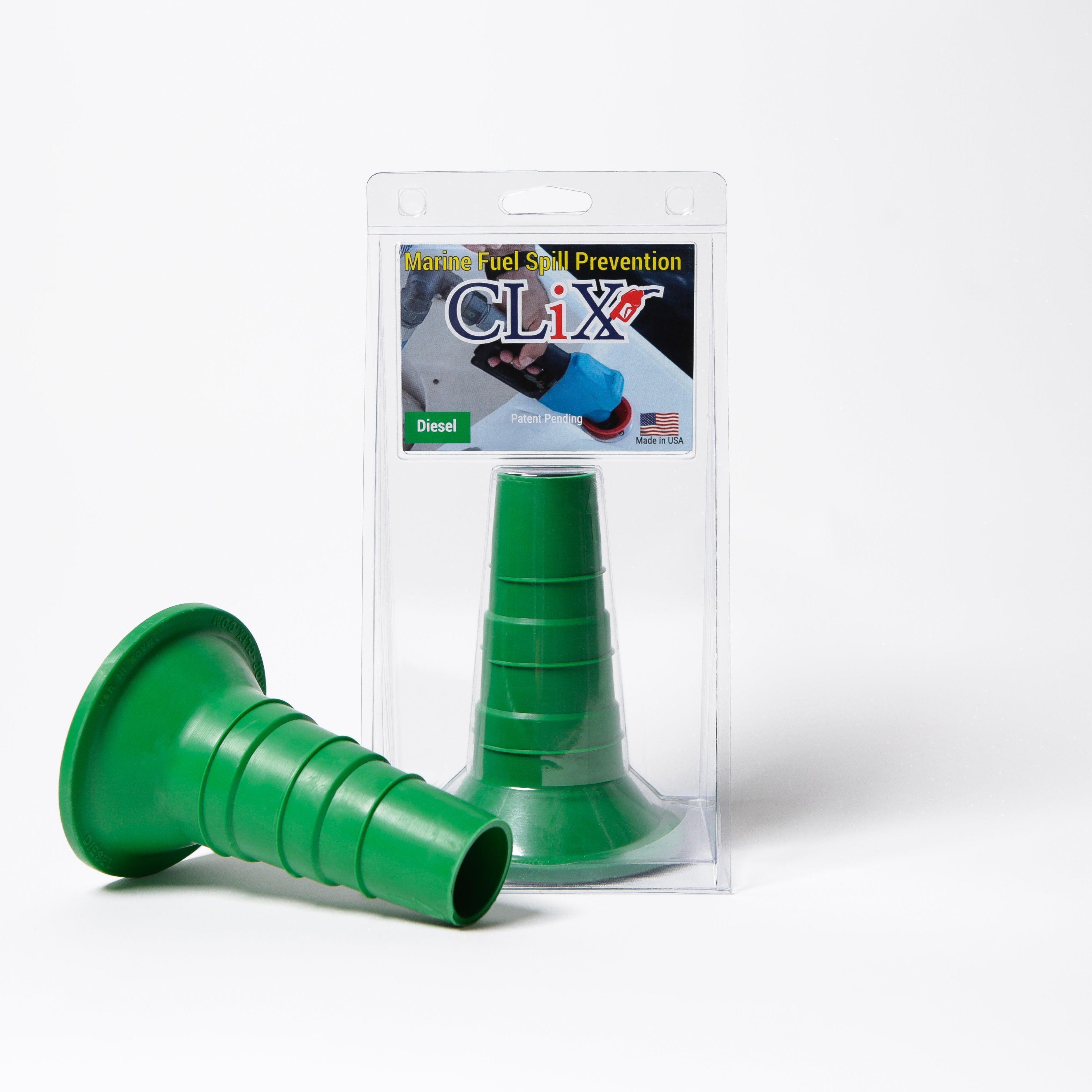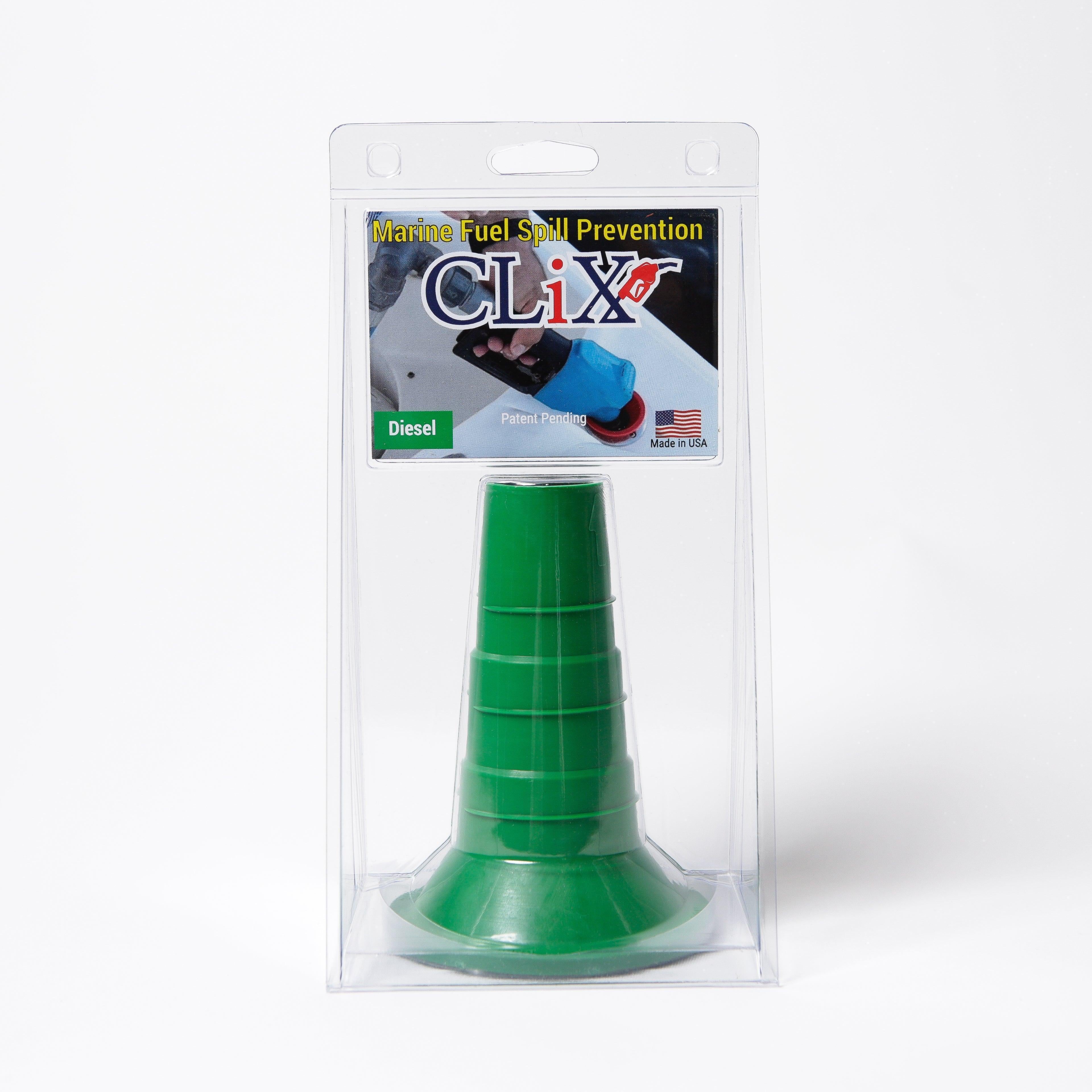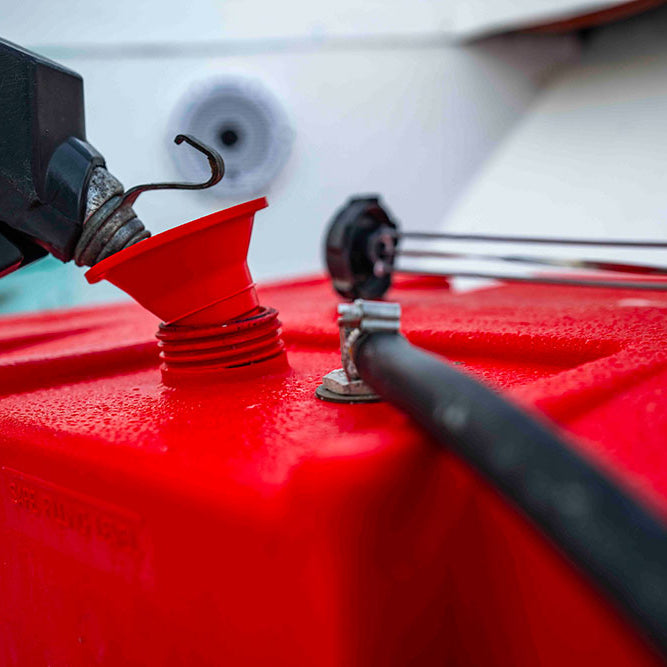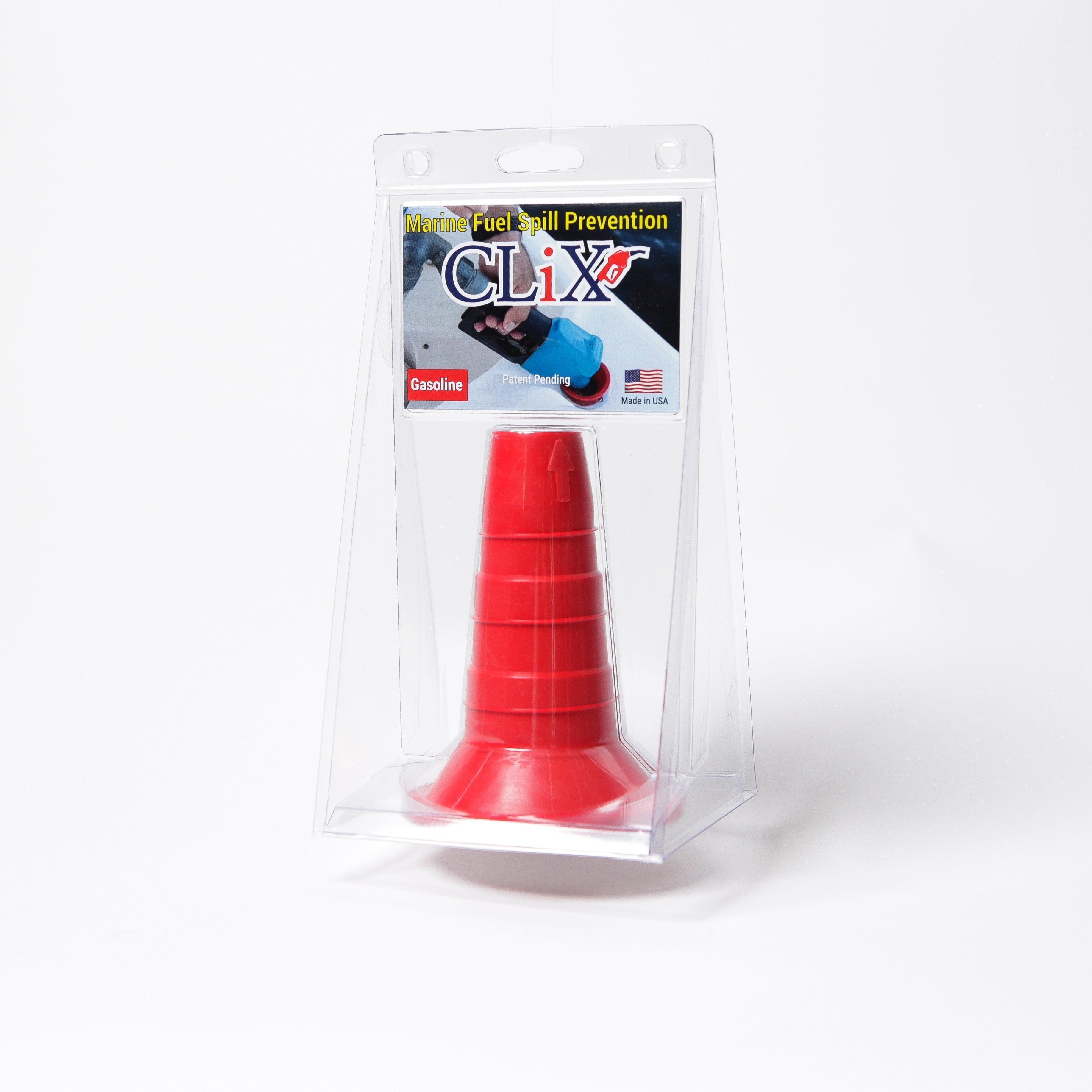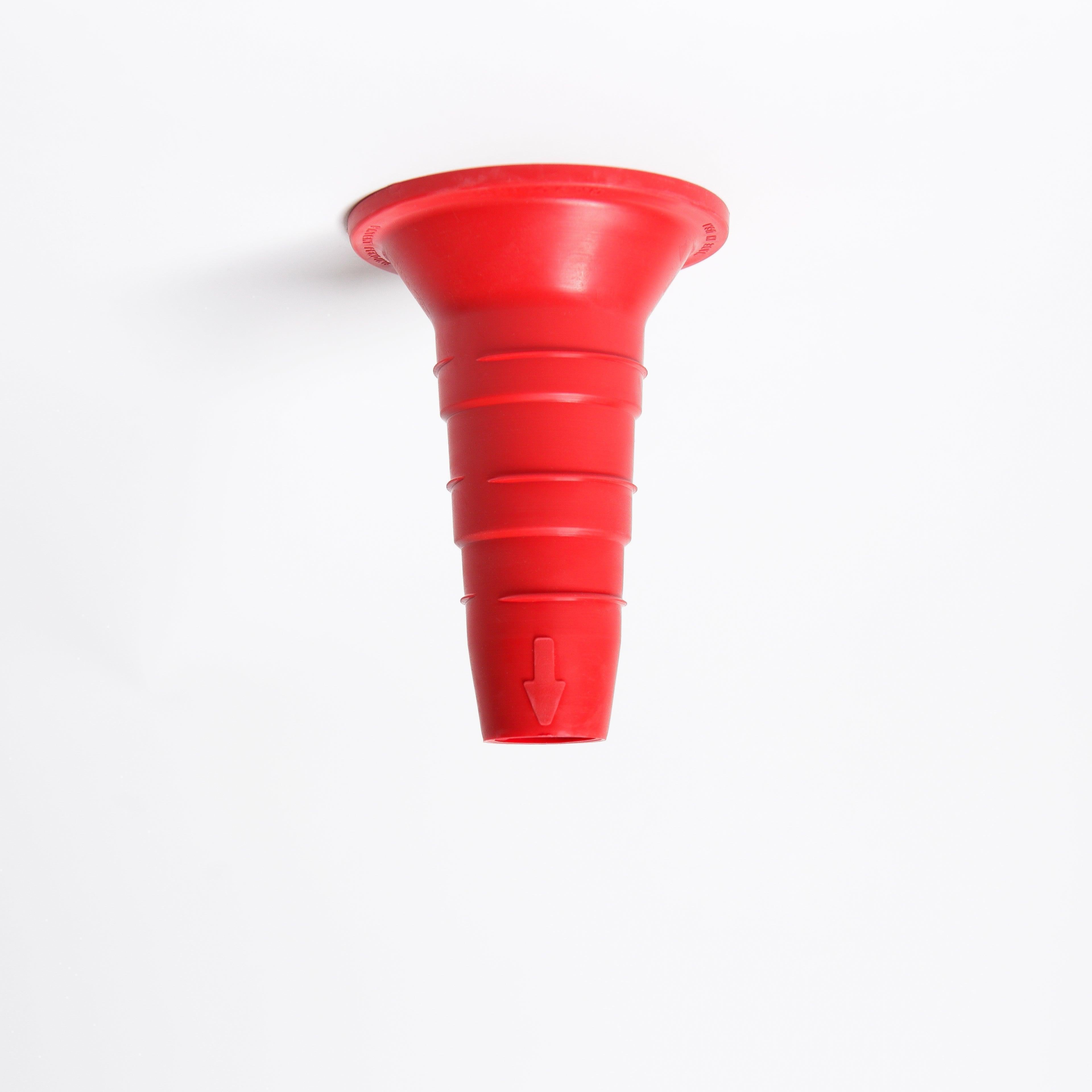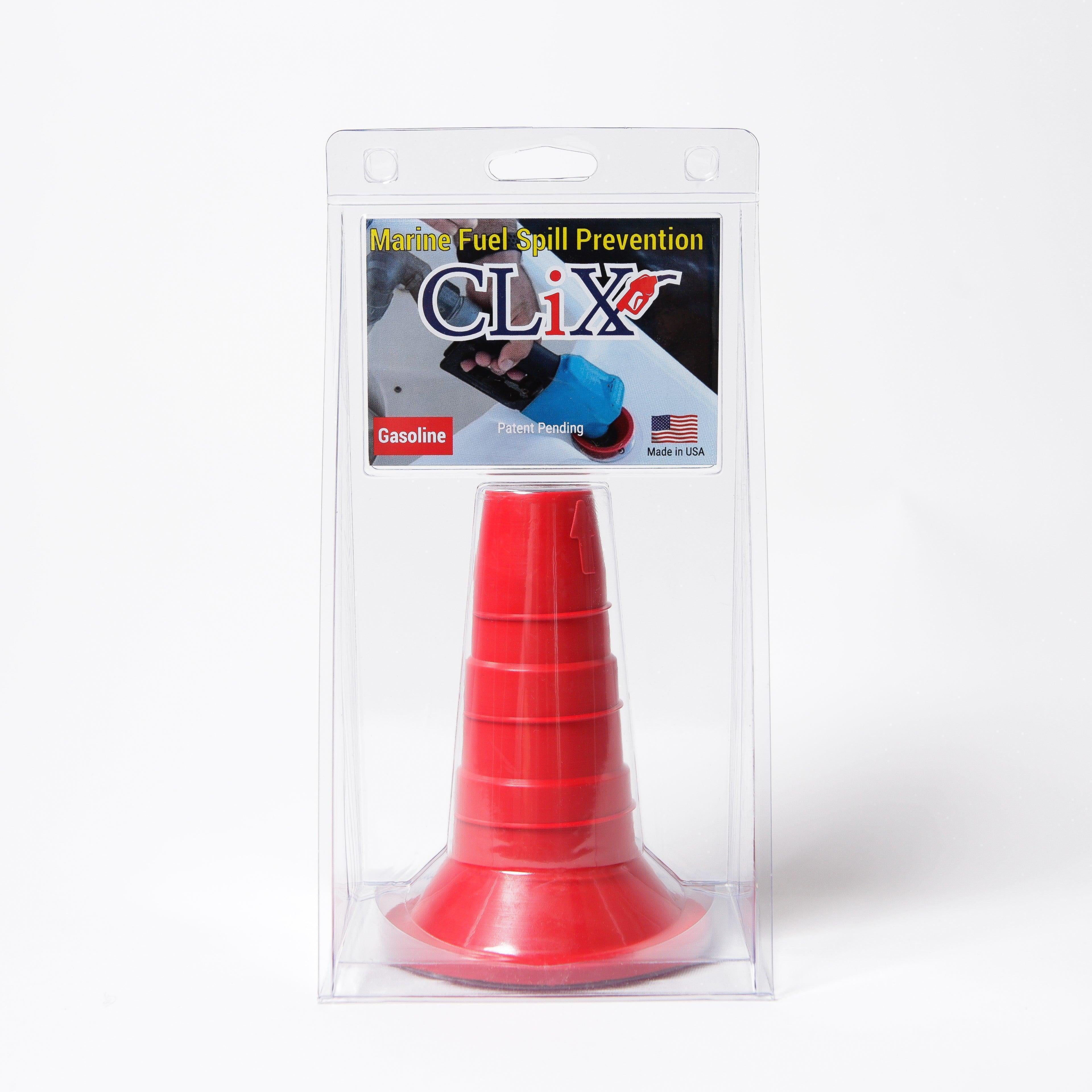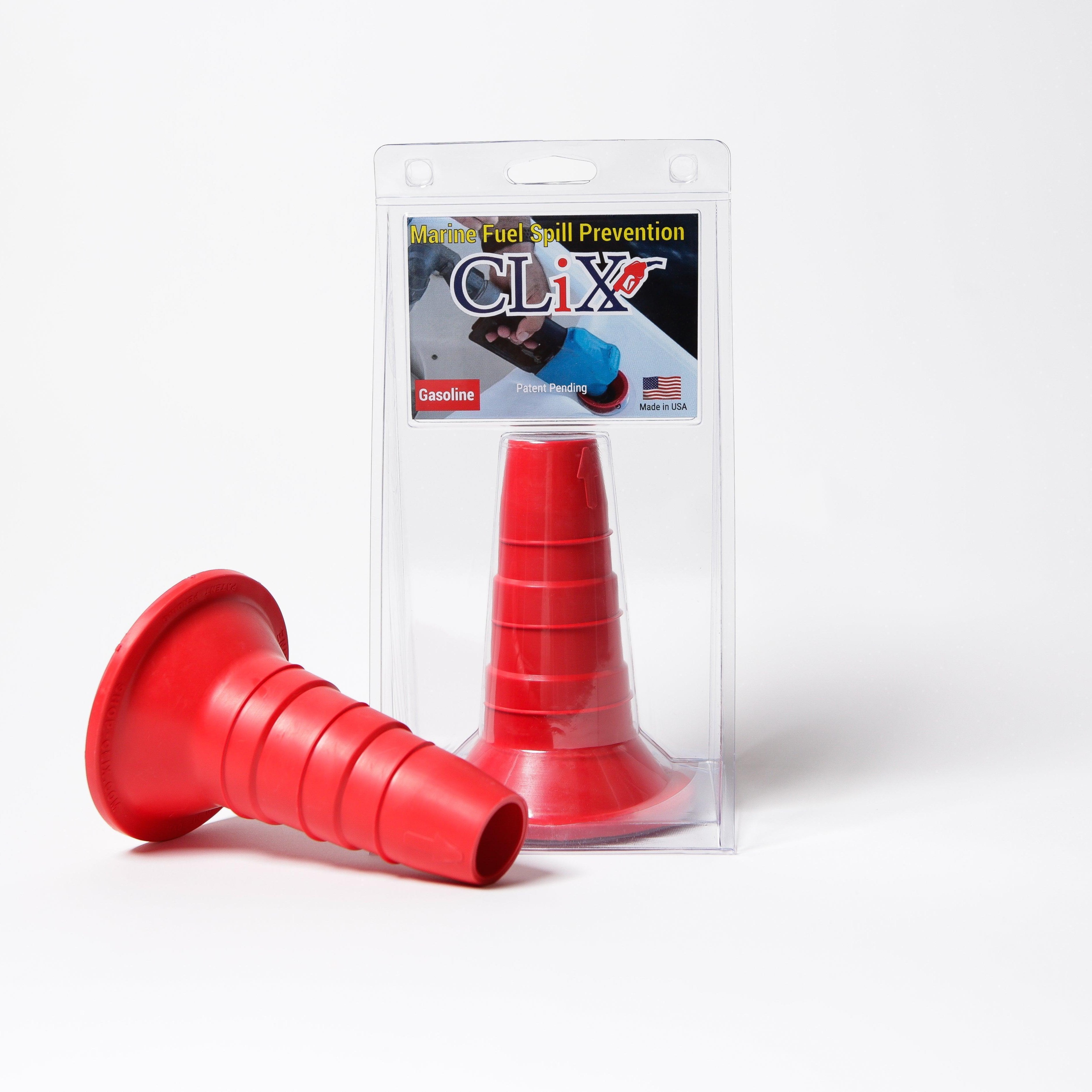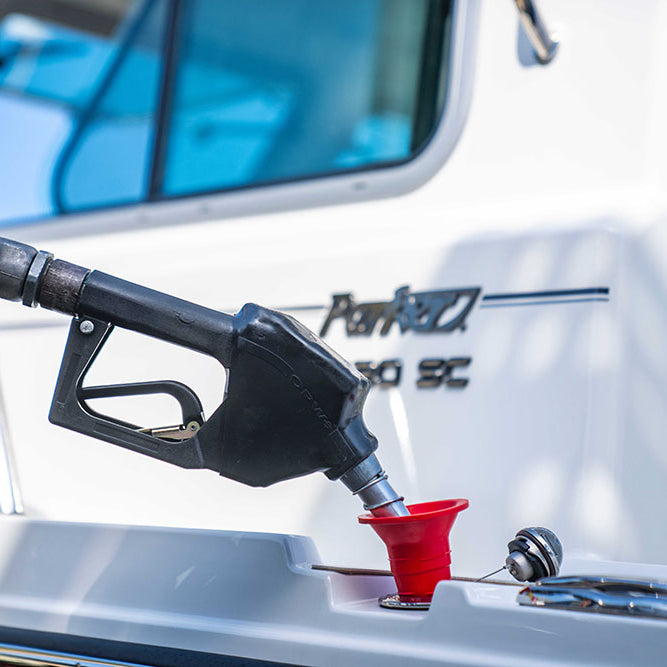Thinking about bringing a piece of the ocean into your home? A 15-gallon marine tank is a fantastic way to start. It's the perfect size for a desk or countertop, creating a living, breathing ecosystem that's more manageable than you might think.
Why a 15-Gallon Saltwater Tank is the Perfect Starting Point
There's an old myth floating around the aquarium world that smaller saltwater tanks are a nightmare to keep stable. I hear it all the time. While it's true that things can change quickly in a small volume of water, modern gear has completely changed the game.
Today's filtration systems, automated lighting, and super-accurate heaters make it surprisingly simple to keep a 15-gallon tank running smoothly. This is why nano reefs have exploded in popularity. You get all the reward of a stunning underwater world without the huge cost or the need to dedicate an entire room to your hobby.
The Magic of a Mini-Ecosystem
So, what's the big deal with a small tank? It's all about the details. In a nano reef, every inhabitant—from the tiniest snail to the most colorful coral polyp—gets to be the star of the show.
You're not just looking at a tank; you're peering into an intricate, miniature world. It’s the best way I know to learn the fundamentals of keeping a marine environment, all on a scale that feels completely doable.
This isn't just a niche hobby anymore, either. The global reef aquarium market was valued at around USD 4.9 billion in 2020 and is expected to hit USD 11 billion by 2028. People are discovering that a small tank is a beautiful, engaging addition to their home. If you're curious, you can dig into more of these aquarium industry statistics to see just how big this trend is.
A nano reef is so much more than a glass box with water in it. It's a living piece of art. It pulls you in and challenges you to become the caretaker of a delicate, beautiful world you've built yourself.
Let's Bust Some Old Myths
Okay, let's tackle that stability myth head-on. The secret to success with any small tank isn't complicated technology or magic potions—it's just consistency.
- Small, Regular Water Changes: Swapping out just 10-20% of the water once a week does wonders. It pulls out the bad stuff and puts back the good stuff, keeping your parameters right where they need to be.
- Let Your Gear Do the Work: A reliable heater and a simple timer for your lights are your best friends. They handle the big stuff so you don't have to worry about sudden temperature drops or lighting changes.
- Choose Your Critters Wisely: This is a big one. Don't overdo it. Pick fish and corals that are actually suited for a small space, and your tank’s natural biological filter won't get overwhelmed.
Stick to a simple, consistent routine, and you’ll find that a 15-gallon marine tank isn't just possible, it's incredibly fun and rewarding. It’s the perfect way to get your feet wet in the saltwater hobby.
Getting Started with Your First All-in-One Tank System
Picking out your first tank is easily one of the most exciting moments in this hobby. If you're looking at a 15 gallon marine tank, you really can't go wrong with an All-in-One (AIO) system. They're practically made for newcomers, combining the aquarium and all the essential filtration into one clean, compact unit.
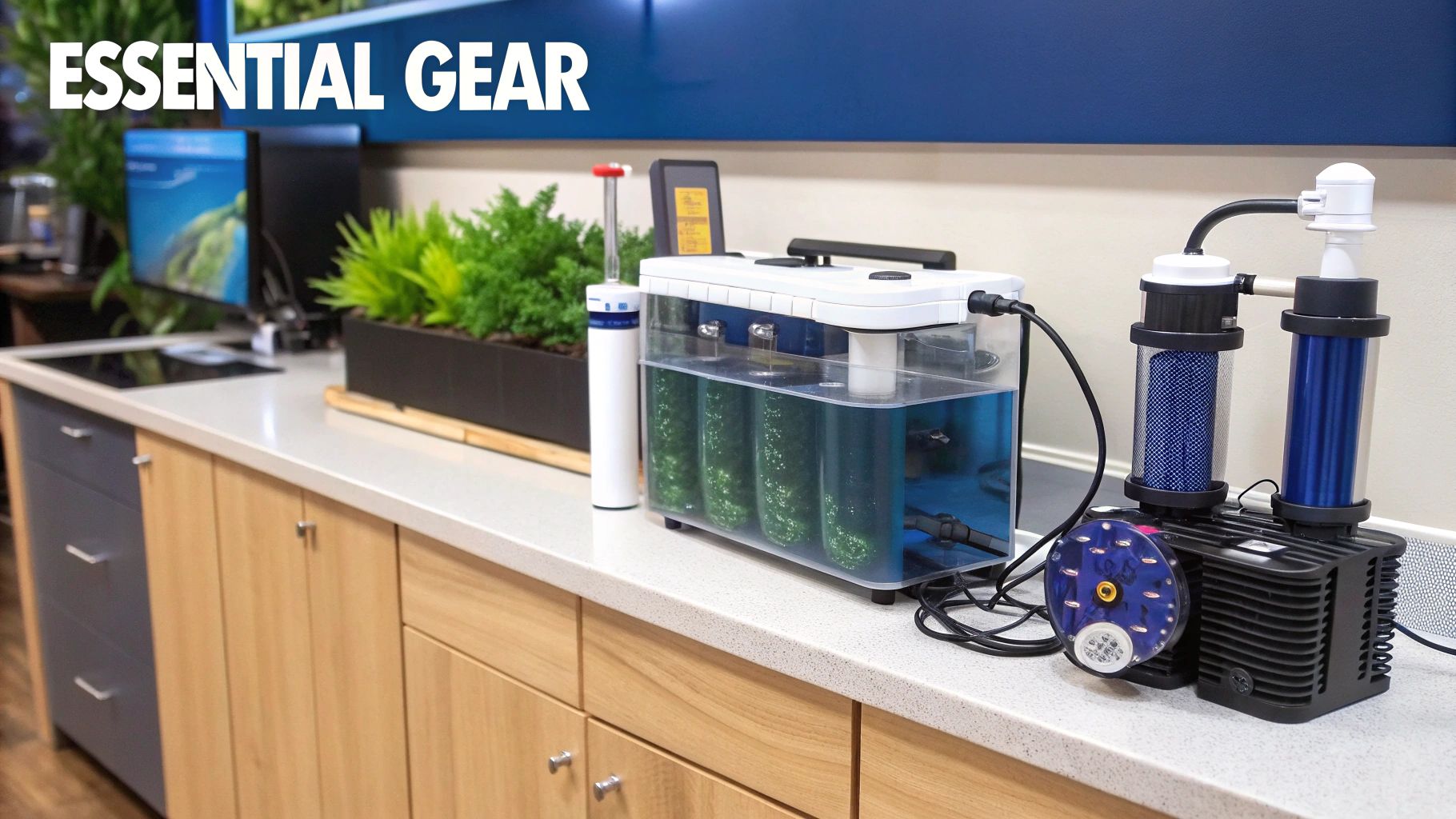
The magic of an AIO is its simplicity. All the gear you need, like the pump and filter media, is tucked away in a built-in chamber at the back. This design gives your main display a super clean, uncluttered look and makes the whole setup process a breeze. You're not left trying to figure out how to hang filters off the back or where to hide all the extra equipment.
What to Look For in an AIO Tank
As you start comparing different AIO tanks, there are a couple of things that will make a huge difference in your daily enjoyment. First, take a close look at the glass. Many of the better nano tanks use low-iron glass, and the difference in clarity is stunning. Standard glass has a subtle green tint that can wash out the brilliant colors of your fish and corals, but low-iron glass gives you a crystal-clear, true-to-life window into your underwater world.
Next up, check out the rear filtration chamber. A thoughtfully designed AIO will have several separate compartments, giving you the freedom to customize your filter media. That kind of flexibility is a game-changer as you get more experienced and want to dial in your water parameters perfectly. You'll also want a system that lets you get to the pump and change out media easily—nobody wants to struggle with that.
The real beauty of an AIO system is its seamless integration. It removes the guesswork of matching different components, allowing you to focus on the creative side of building your reef—the aquascape and livestock.
Custom Setups: The DIY Alternative
AIOs are fantastic, but they’re not your only choice. Going the custom route means you have total control over every single piece of equipment. This path typically involves starting with a standard glass tank and adding a good-quality hang-on-back (HOB) filter.
This approach can sometimes be a bit easier on the wallet upfront, and there's a unique satisfaction in piecing it all together yourself. You'll learn the function of every component inside and out. The trade-off is that it demands more research to make sure everything you buy will work together harmoniously.
Here’s a quick breakdown to help you weigh your options:
-
All-in-One (AIO) Systems:
- Pros: Sleek look with hidden gear, incredibly simple to set up, and all parts are designed to work together.
- Cons: Often a higher price tag, and you’re pretty much stuck with the built-in components like the return pump.
-
Custom Hang-on-Back Setups:
- Pros: Can have a lower initial cost, you get to pick every piece of equipment, and it's easy to upgrade parts down the line.
- Cons: The visible equipment can look a bit messy, and it takes more planning to get everything right.
For most people just starting out, the plug-and-play simplicity of an AIO 15 gallon marine tank is the way to go. It handles the technical stuff for you, so you can jump right into the fun part: creating your own little piece of the ocean. It's a rock-solid foundation for a beautiful and thriving nano reef.
Essential Gear For a Thriving Nano Reef
Once you've picked out your tank, it's time for the fun part: turning that glass box into a living, breathing ecosystem. Getting the right gear from the get-go is the secret to long-term success with a 15 gallon marine tank. It’s all about creating a stable environment where your future fish and corals can truly flourish.
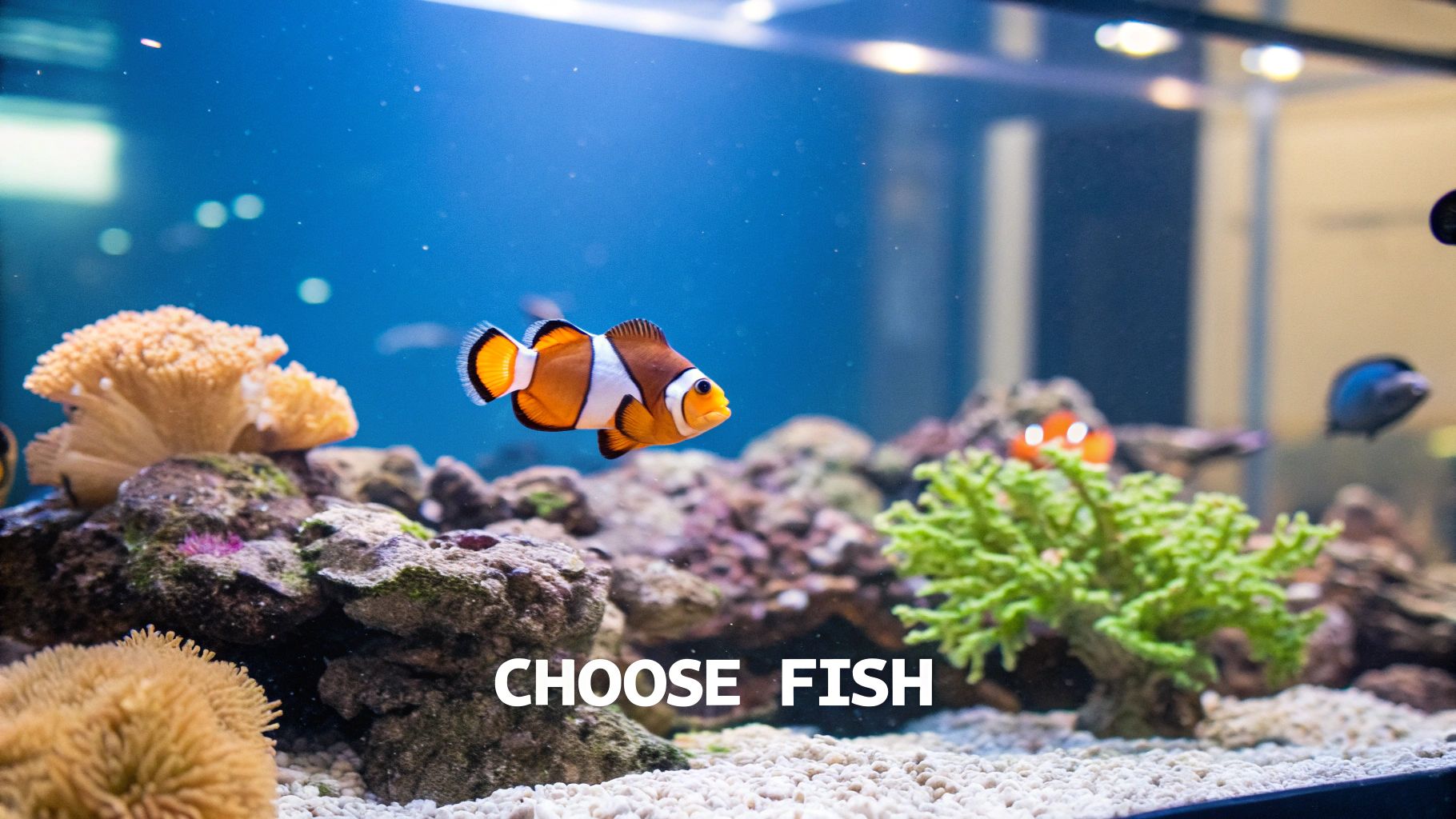
The good news is, this has become so much easier for newcomers, which is a big reason the hobby is booming. The global aquarium market hit USD 3.60 billion in 2023 and is expected to climb to USD 6.21 billion by 2032. A lot of that growth is thanks to smart tech that makes keeping an aquarium less of a chore.
Lighting Your Nano World
Lighting is probably the single most important decision you'll make, especially if you want to keep corals. These days, modern LED lights are the gold standard for reef tanks. They give you incredible control over the color spectrum and intensity, which are both critical for keeping corals healthy and vibrant.
If you're starting with easy soft corals like Zoanthids or mushrooms, you don't need to break the bank. A simple, budget-friendly LED made for nano reefs will do the job just fine. But if you have your eye on more demanding corals down the road, it's smart to invest in a light with customizable settings and a higher PAR (Photosynthetically Active Radiation) output from the start.
Keeping Things Stable With Heat and Flow
Marine life doesn't like surprises, and temperature is a big one. A reliable heater is an absolute must-have. For a 15-gallon setup, a 50- to 75-watt heater is the sweet spot. It has enough power to keep the temperature steady without any risk of cooking your small volume of water.
Next up is water movement. The ocean is never still, and that constant motion delivers food to corals and whisks away waste. You can mimic this in your tank with a small wavemaker or powerhead. This gentle, random flow is key to preventing "dead spots" where gunk can build up and to keeping your corals happy. The idea of maintaining a stable, well-managed system applies on a larger scale too, like with a boat's fuel system. You can see how we approach that in our guide to choose and maintain a boat fuel tank.
A Quick Tip: Think of your heater and wavemaker as your tank's life support. They work quietly in the background to create the stable, dynamic environment your reef needs to thrive. Consistent temperature and good flow are the cornerstones of a healthy nano reef.
To make sure you have everything you need, I've put together a quick checklist.
15 Gallon Marine Tank Equipment Checklist
This table breaks down the essential gear you'll need to get your 15 gallon marine tank up and running smoothly.
| Equipment | Recommended Specification | Purpose |
|---|---|---|
| Tank | All-in-one (AIO) 15-gallon | Simplifies filtration and equipment setup. |
| Lighting | Nano reef LED with adjustable spectrum | Provides essential light for coral photosynthesis (PAR). |
| Heater | 50-75 watt adjustable heater | Maintains stable water temperature. |
| Wavemaker | 200-400 GPH (Gallons Per Hour) | Creates water flow to deliver nutrients and remove waste. |
| Live Rock | 10-15 lbs | Provides natural biological filtration and a base for corals. |
| Sand | 15 lbs live or dry sand | Creates a natural-looking substrate and supports beneficial bacteria. |
| Salt Mix | High-quality reef salt | To mix with RO/DI water for creating saltwater. |
| RO/DI Water | 0 TDS (Total Dissolved Solids) | Pure water source to prevent algae and contaminants. |
| Refractometer | Calibrated for saltwater | Accurately measures salinity levels. |
| Test Kits | Ammonia, Nitrite, Nitrate, Alkalinity, Calcium | Monitors water parameters during cycling and beyond. |
Having these items ready will set you up for a much smoother and more enjoyable experience as you bring your reef to life.
Essential Testing and Measurement Tools
You can't manage what you don't measure. Having a few key testing tools on hand will let you know exactly what's going on in your water, so you can catch small issues before they become big problems.
- Refractometer: This is the best way to get a precise reading of your water's salt level, or salinity. You'll be aiming for a target of 1.025 specific gravity.
- Core Parameter Test Kits: You'll absolutely need reliable kits for ammonia, nitrite, and nitrate. These are vital for tracking your tank's initial nitrogen cycle and making sure the water is safe for your first inhabitants.
- Alkalinity and Calcium Kits: If you're keeping corals, you'll eventually need to watch these. They are the essential building blocks corals use to grow their skeletons.
With this essential gear in place, your 15 gallon marine tank is perfectly equipped to become that stunning slice of the ocean you've been dreaming of.
Bringing Your New Aquarium to Life
You've got the gear. Now it's time to turn that empty glass box into a vibrant, living reef. This is where the real fun begins, but it's also the most critical stage. Setting up your 15 gallon marine tank and letting it cycle properly lays the groundwork for a healthy, stable ecosystem. A little patience now pays off big time down the road.
First up is the creative part: aquascaping. This is more than just plopping rocks and sand in the tank. You're building the foundation of your underwater world. Arrange your live rock to create interesting shapes—caves, arches, and overhangs. These not only look great but also give fish places to hide and offer prime real estate for placing corals later. Just make sure the structure is stable and has plenty of gaps for water to flow through, which prevents dead spots where waste can build up.
With the rockscape set, you can add your sand. For a nano reef like this, a one- to two-inch sand bed is just about perfect. It gives beneficial bacteria and tiny critters a place to live without becoming a trap for gunk and detritus.
Mixing Saltwater and Kicking Off the Cycle
Time to add water. You'll want to use a high-quality reef salt and mix it with RO/DI (Reverse Osmosis Deionized) water. Here's a pro tip: always add the salt to the water, never the other way around. Stir it in a separate bucket or container until every last crystal has dissolved and the water is completely clear.
Grab your refractometer and shoot for a specific gravity of 1.025. Once you've hit that magic number, you can gently fill the tank. Then, switch on your heater and wavemaker to get the water circulating and warming up to the right temperature.
This is the official start of the nitrogen cycle. It’s the natural process that allows beneficial bacteria to establish themselves and break down toxic ammonia into much safer compounds. This is your tank's biological filter in the making, and it's the single most important part of the whole setup.
The path from a new tank to a mature one is pretty predictable. You add your gear, cycle the water, and keep a close eye on things. This infographic gives you a bird's-eye view of the whole process.
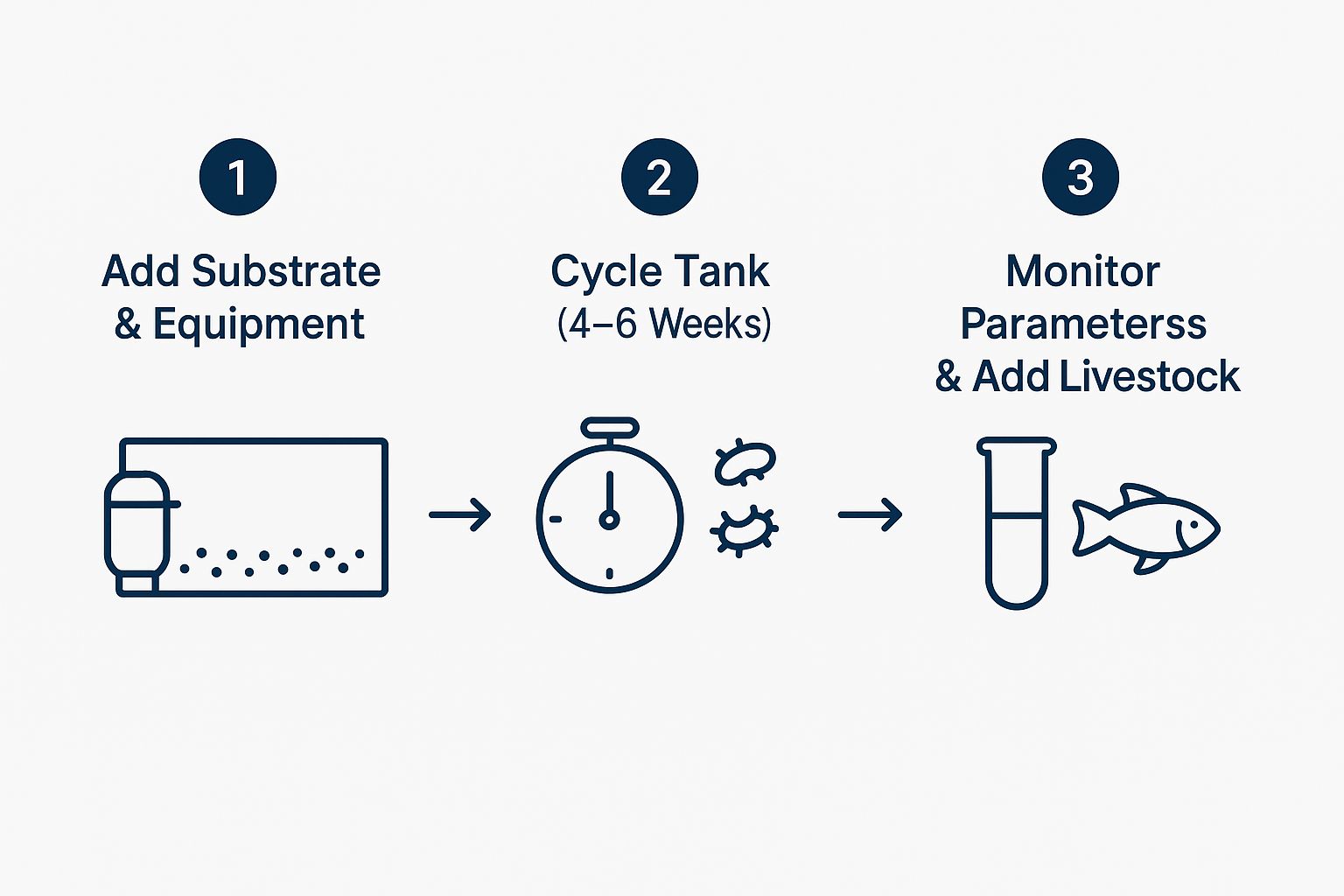
As you can see, cycling takes the most time, but it’s absolutely essential for building the biological stability your tank needs before any fish or corals can move in.
Getting Through the Nitrogen Cycle
So, how long does this take? Plan on about four to six weeks. To get the bacteria growing, you need to give them a food source—ammonia. There are a few tried-and-true ways to do this:
- Ghost Feeding: Just toss a tiny pinch of fish food into the tank every couple of days. As it breaks down, it releases ammonia, giving your new bacteria something to munch on.
- Bottled Bacteria: You can buy live nitrifying bacteria in a bottle. These products can give your tank a serious head start by seeding it with a healthy population right from the get-go.
- Pure Ammonia: For those who like precision, you can add pure, unscented ammonia directly to the water. This lets you control the exact amount and monitor how quickly the bacteria consume it.
Whichever route you take, your job is to test the water every few days. You'll be looking for ammonia, nitrite, and finally, nitrate. You’ll watch ammonia levels spike, then drop as nitrite shows up. Next, nitrite will spike and fall, and you'll start seeing nitrate on your test kit.
Your cycle is complete when you can add an ammonia source and, within 24 hours, it's completely gone, with both ammonia and nitrite testing at zero. That’s the green light. It means your biological filter is ready to handle the real thing: fish!
For more detail on getting everything just right, check out our guide on how to perfect your 15 gallon tank setup today. It’s packed with extra tips to make sure your aquarium journey starts off on the right foot.
Once you’re consistently seeing zero ammonia and nitrite, do a small water change to bring down those initial nitrates. Now, you’re finally ready for the best part—adding your first fish
How to Stock Your 15 Gallon Marine Tank
Alright, this is the fun part—choosing the life that will turn your tank into a tiny, vibrant ecosystem. With a 15 gallon marine tank, the mantra is always "less is more." A lightly stocked aquarium isn't just easier to manage; it gives every inhabitant the space they need to truly thrive and be seen.
The goal is to pick small, peaceful fish that won’t overwhelm the tank's limited real estate or its filtration capacity. This thoughtful approach leads to a much healthier and more stable environment for everything you put inside.
Picking the Perfect Fish
In a smaller volume of water, every single fish counts. You'll need to steer clear of anything that gets too big or too active. The sweet spot is fish known for their small adult size and chill personalities.
Here are a few fantastic choices that work beautifully in a 15-gallon setup:
- Ocellaris Clownfish: You can't go wrong with a classic. A single clownfish is hardy, absolutely packed with personality, and stays small enough to be a perfect centerpiece.
- Firefish or Dartfish: These guys are pure elegance. Their slender bodies and vibrant colors are stunning as they hover in the water. They're also incredibly peaceful, making them great tank mates.
- Tailspot Blenny: If you want a fish with character, look no further. These little guys spend their days perched on rocks, pecking at algae, and watching everything going on. Their behavior is endlessly entertaining.
This careful stocking is what makes reefing so rewarding. The specialized nature of these systems, especially with live corals and invertebrates, is why their maintenance can be complex. A 15 gallon marine tank is the perfect entry point for hobbyists to learn the ropes with popular species in a manageable space.
The Unsung Heroes: The Clean-Up Crew
No reef tank is truly complete without its janitorial staff. These invertebrates are the unsung heroes, working around the clock to keep algae and leftover food from taking over. A good clean-up crew is absolutely essential for a pristine tank.
A great clean-up crew does more than just clean; it adds another layer of life and activity to your tank. Watching snails graze across the glass and shrimp meticulously pick over the rockwork is part of the magic of a nano reef.
For a 15-gallon system, you don't need a massive crew. A small, efficient team might include a few Nassarius snails to sift the sand, some Trochus snails to handle algae on the glass and rocks, and maybe a Scarlet Skunk Cleaner Shrimp to take care of detritus. They make a huge difference. The core principles of maintaining a healthy, balanced system are universal, whether it's a small aquarium or a large vessel. You can see how these concepts scale up in our guide to the modern boat fuel system.
First Corals to Consider
Of course, your tank isn't just for fish and shrimp—it's a living coral garden! Starting with hardy, beginner-friendly corals is a great way to build your confidence and splash some incredible color onto your rockwork.
Soft corals are usually the best place to start. They're far more forgiving if your water parameters swing a little.
Check out these beautiful and resilient options:
- Zoanthids: They come in a mind-blowing variety of colors and grow into mat-like colonies that can cover a rock.
- Mushroom Corals: Super easy to care for and available in some truly stunning patterns and textures.
- Green Star Polyps (GSP): This one grows fast, creating a vibrant, waving carpet of neon green that brings amazing movement to the tank.
Choosing the right mix of fish, invertebrates, and corals is key to building a thriving nano reef. The table below breaks down some excellent beginner choices to help you plan your perfect underwater community.
Beginner-Friendly Livestock for a 15 Gallon Tank
| Inhabitant Type | Example Species | Care Level | Notes |
|---|---|---|---|
| Fish | Ocellaris Clownfish | Easy | Hardy and iconic. Best to keep a single one or a bonded pair. |
| Fish | Firefish Goby | Easy | Peaceful and colorful, but can be jumpers. A lid is recommended. |
| Invertebrate | Trochus Snail | Easy | Excellent algae eater for glass and rocks. Can right itself if it falls. |
| Invertebrate | Cleaner Shrimp | Easy | Adds activity and helps clean fish and leftover food. |
| Coral | Zoanthids / Palythoas | Easy | Wide variety of colors. Place in low-to-moderate flow and light. |
| Coral | Mushroom Corals | Easy | Very forgiving. Prefers lower light and flow areas. |
By starting with these hardy species and adding them slowly, you’ll create a balanced and captivating underwater world in your 15 gallon marine tank. Happy reefing
Common Questions About Your Nano Reef
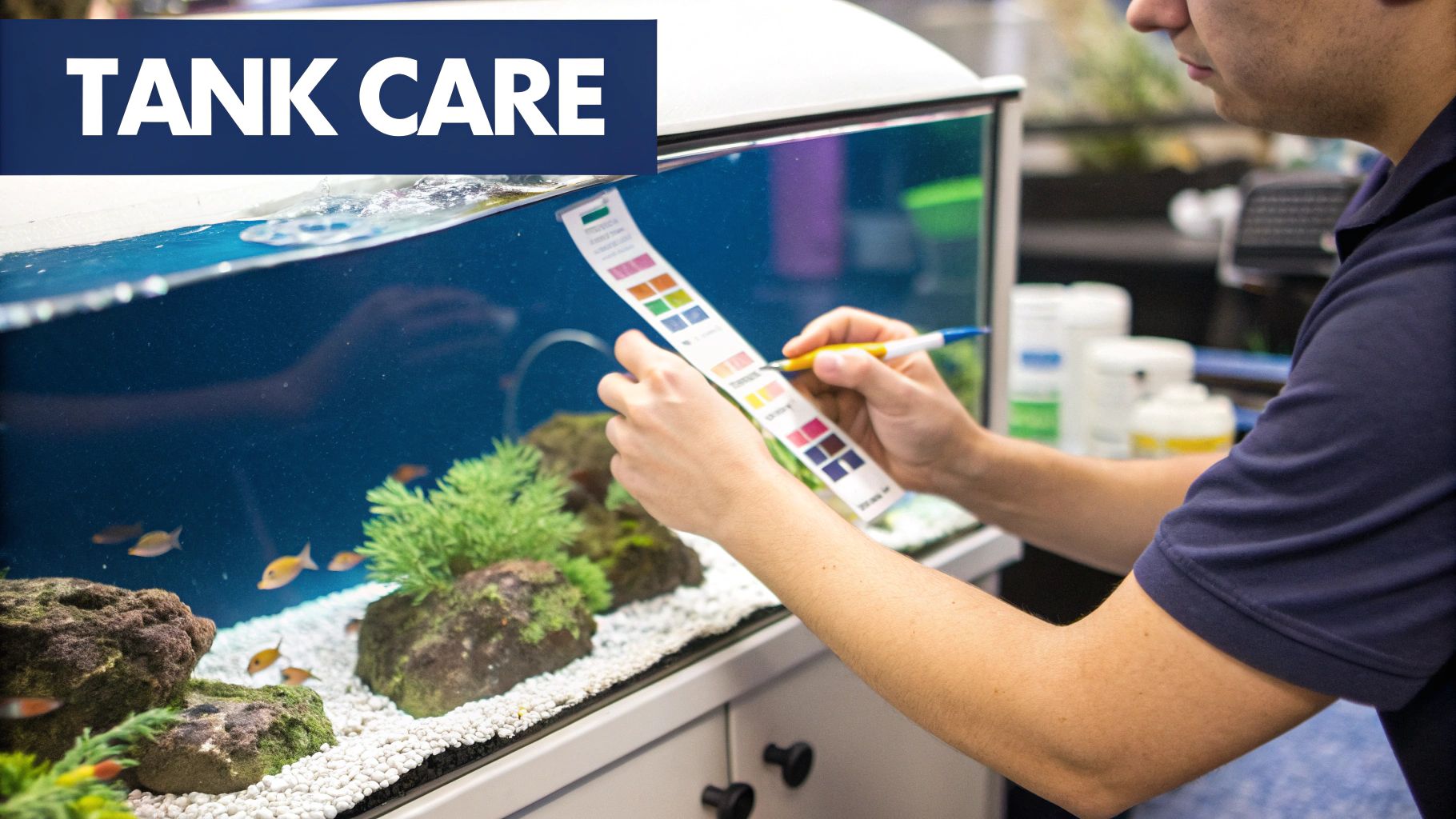
Jumping into saltwater aquariums for the first time can feel like a lot, but you'd be surprised how often beginners ask the same handful of questions. Getting good answers from the get-go is the best way to feel confident as you start your journey with a 15 gallon marine tank.
Let's talk money first, because that's always a big one. You could spend a fortune, but you don't have to. A really solid starter setup—I'm talking a quality all-in-one tank, a decent light, a heater, and live rock—can realistically come together for about $500 to $800. The trick is to put your money into the core components. Skimping now often means paying more to fix problems down the road.
Then there's the time commitment. Is this going to be a second job? Not at all. Once your tank is established and running smoothly, your daily "chores" take maybe five minutes. Seriously. It's just feeding time and a quick look to make sure everyone looks happy. Your main event is the weekly water change, which for a tank this size, will probably take you 30 to 45 minutes, tops.
What Are the Most Common Beginner Mistakes
Knowing where people usually trip up is the best shortcut to success. Most of the headaches I see with new nano reefs boil down to just a few simple, avoidable mistakes. Keep these in mind, and you'll be starting off on the right foot.
-
Going Too Fast: This is the big one. Everyone is excited to stock their new tank, but adding too many fish or corals at once crashes your biological filter. The result? Ammonia spikes, stressed-out animals, and a whole lot of frustration. Be patient. Add one thing at a time and give the tank at least two weeks to adjust before adding anything else.
-
Overfeeding: It's so tempting to spoil your fish, but any food they don't eat just rots and fouls the water. A good rule of thumb is to feed only what your fish can completely finish in about 30 seconds, once a day. That's it.
-
Chasing Perfect Numbers: New reefers often get fixated on their test kits, constantly dosing chemicals to hit some "perfect" number they read online. This usually causes wild swings in water chemistry, which is far worse than slightly off parameters. Your goal should be stability, not perfection. Consistent weekly water changes are your best friend here.
The real secret to a beautiful nano reef isn't a degree in chemistry or the most expensive gadgets. It's patience and consistency. A stable environment is always, always better than a "perfect" one that's constantly fluctuating.
If you can just sidestep these common pitfalls, you'll build a fantastic foundation for a thriving 15 gallon marine tank that you can enjoy for years to come.
Keeping things simple and safe shouldn't stop at your aquarium. When it's time to fuel your boat, CLiX Fueling Solutions provides a spill-free system with an automatic shut-off to protect your investment and the water. Make every fill-up a clean one by learning more at the official CLiX Fueling website.

